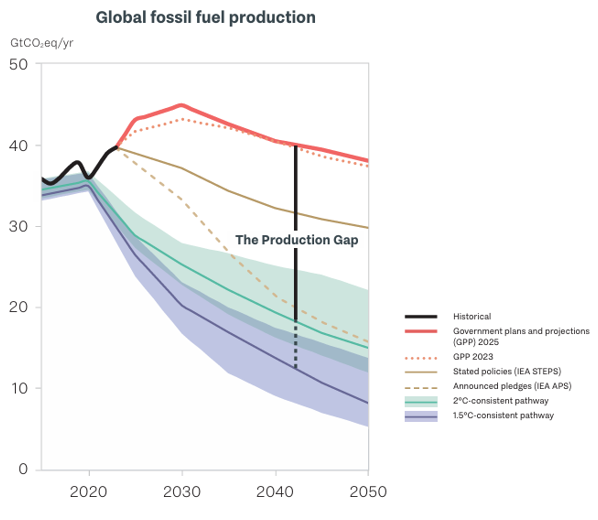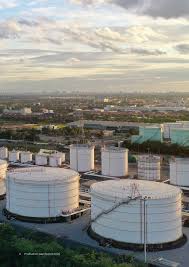Syllabus:
GS-3: Conservation, environmental pollution and degradation, environmental impact assessment
Context:
According to the Production Gap Report 2025, Global fossil fuel plans exceed Paris limits by 120% for 1.5°C.
Key Findings
• Coal Production Overshoot: Coal remains the most misaligned as global output in 2030 is projected to be 500% higher than the median 1.5°C pathway and 330% above the 2°C benchmark.
• Oil and Gas Production Gap: The planned 2030 production of oil and gas gaps are exceeding Paris-aligned limits by 31% and 92%, respectively.

- To align with the Paris Agreement, coal use must be nearly phased out by 2040, while oil and gas production must fall by around 75% by 2050 compared to 2020 levels.
- Current trajectories instead project fossil fuel output in 2050 at more than 4.5 times higher than 1.5°C-consistent levels.
• Fiscal Burden: The fiscal burden of government support for fossil fuels remains close to record levels, despite repeated international commitments to phase out inefficient subsidies.
• Global Context:
- Only six of the twenty major fossil fuel-producing countries are developing domestic fossil fuel production plans aligned with national and global net-zero targets.
- China, United States, Saudi Arabia, Brazil, and Nigeria are some of the countries increasing their extraction activities.
- Nigeria recently doubled its 2030 oil target, while Brazil projects a 47% jump in output by the same year.
- Meanwhile, state-owned companies in China and India continue to back slower coal declines than previously expected.
Recommendations
- Align Production Plans with Climate Targets: Governments should revise their fossil fuel production plans to align with the global climate objectives set forth in the Paris Agreement.
- Phase Out Inefficient Subsidies: Countries must honour their commitments to eliminate subsidies that encourage fossil fuel production and consumption.
- Invest in Renewable Energy: Redirect investments from fossil fuels to renewable energy sources to facilitate a transition to a low-carbon economy.
- Ensure a Just Transition: Implement policies that support communities and workers affected by the shift away from fossil fuels, ensuring equitable economic opportunities.
About the Report
- This is the fifth edition of the Production Gap Report, first issued in 2019.
- It is released by leading research institutes Stockholm Environment Institute (SEI), Climate Analytics, and International Institute for Sustainable Development (IISD). It is backed by the UN.
- The report tracks the misalignment between governments planned fossil fuel production and global production levels consistent with limiting global warming to 1.5°C or 2°C.
- The report represents a collaboration of several research and academic institutions, including inputs and reviews from more than 50 experts spanning all parts of the globe.
- The report is externally peer-reviewed.
- This year’s report provides an updated analysis from the 2023 Production Gap Report, examining the plans and projections of 20 major fossil fuel–producing countries.
Sources:

